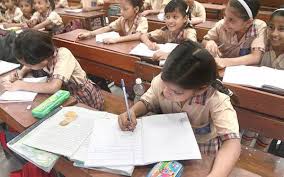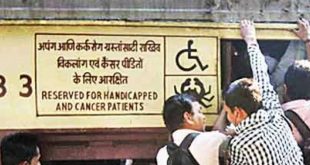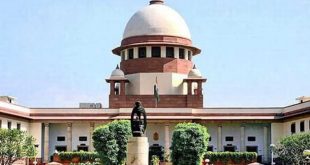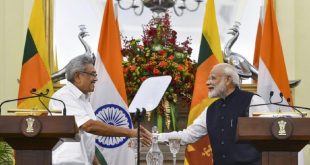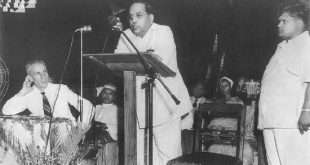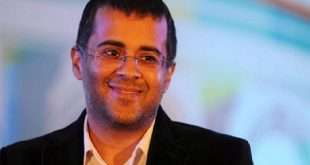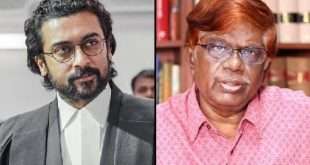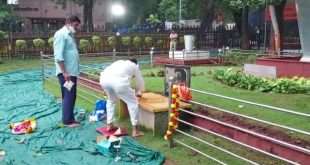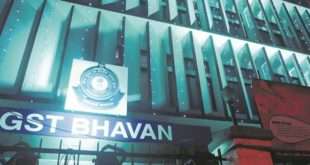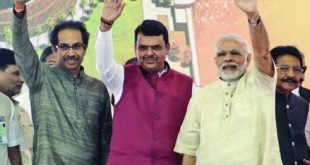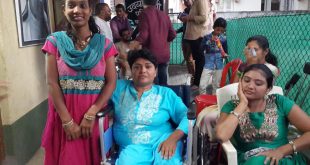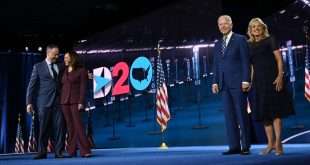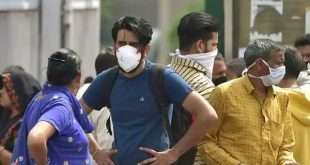देशातील विद्यार्थ्यांना २१ व्या शतकातील आधुनिक पध्दतीचे शिक्षण मिळावे या उद्देशाने केंद्राने नुकतेच राष्ट्रीय शिक्षण धोरण मसुदा जाहीर केला. या मसुद्याची घोषणा आहे की “२०२२ पर्यंत अभ्यासाचे शिक्षण कमी करणे आणि त्याऐवजी समग्र विकास आणि २१ व्या शतकातील कौशल्य जसे की विचारसरणी, सर्जनशीलता, वैज्ञानिक स्वभाव, संप्रेषण, सहयोग, बहुभाषिक, समस्येचे निराकरण, नीतिशास्त्र, सामाजिक जबाबदारी आणि डिजिटल साक्षरता. ” देशाला तीन दशकांपेक्षा जास्त काळ या धोरण मसुद्याची वाट पाह्यली जात होती, या धोरणामधील हे गुण स्वागतार्ह आहेत, जरी त्यांना २१ वे शतकातील कौशल्य का असावे याबद्दल आश्चर्य वाटेल. पूर्वीच्या शतकांमध्ये त्यांची आवश्यकता नव्हती का ? तेव्हा लोक कमी सर्जनशील होते का? सर्व पध्दतीचे कौशल्य मिळण्यासाठी काही चांगल्या प्रयत्नांचीही गरज असते, हे प्रयत्नच चांगले कौशल्य मिळवायला मदत करतात.
शिक्षण पध्दतीत बदल करण्याच्या अनुषंगाने मागील चार वर्षांपासून मौलिक आणि वास्तविक सूचना सातत्याने मिळविण्यात येत होते. या सूचनांचा विचार करून धोरणास अंतिम स्वरूप दिल्यामुळे आता चिंतेचा शेवट झाला आहे.
शिक्षण आणि कौशल्य विकासात झालेल्या घसरणीमुळे यात कराव्या लागत असलेल्या गुंतवणूकीवरून तणाव किंवा त्याविषयीची चिंता निर्माण झाली. मात्र या धोरणाची सर्वाधिक आवश्यकता ३० वर्षे वयोगटाखालील ६० टक्के असलेल्या लोकसंख्यासाठी गरजेची आहे. देशासाठी हे धोरण स्वागतार्ह असले तरी त्यासाठी काही महत्वाचे प्रश्न निर्माण होत असून ते विचारणे आवश्यक आहे.
कोणत्याही देशाला नफा कमवायचा असेल तर गुंतवणूकीशिवाय त्या त्या क्षेत्रात गुंतवणूक करणे क्रमप्राप्त आहे. या धोरणानुसार शिक्षणावर जगभरातील सुमारे ६५ देश त्यांच्या जीडीपीच्या ५% पेक्षा जास्त खर्च करतात. तर ५० देश शिक्षणावर ३% पेक्षा कमी खर्च करतात. आपण अर्थात भारतात शिक्षणावर २.४% खर्च करतो. मात्र राष्ट्रीय शिक्षण धोरणात शिक्षणावर ६% पर्यंत खर्च वाढवण्याची चर्चा आहे. मागील काही वर्षामध्ये अशाच पध्दतीची घोषणा करण्यात आली होती. परंतु वास्तवात खर्च वाढण्याऐवजी २०१४ पासून एकूण जीडीपीच्या ३.१% वरून २.४% पर्यंतचा शिक्षणावरील खर्च खाली आणण्यात आला आहे.
सर्व शिक्षा अभियान आणि राष्ट्रीय माध्यमिक शिक्षा अभियानातंर्गत राबविण्यात येत असलेल्या शैक्षणिक कामकाजात अनुक्रमे ३१% आणि ७१ टक्के कमतरता आली आहे. त्यामुळे जात, वर्ग, धर्म, लिंग किंवा अपंगत्व आधारित सर्व प्रकारच्या विषमता मिटविण्यासाठी देशातील सर्वांसाठी एक समान शिक्षणाची आवश्यकता निर्माण झाली आहे. समानता निश्चित करण्याचा महत्वाचा मापदंड ठरविण्याच्या कामी शैक्षणिक अभ्यासक्रम ठरविणे महत्वाचे असून एनसीईआरटी आणि एससीईआरटीकडून या कामात महत्वाची भूमिका राहणार आहे. त्यांच्या अभ्यासक्रमात उजवी किंवा डावी झुकलेली आदी विचारधारांमधील भूतकाळातील, वर्तमान आणि भविष्यातील सर्व चिंता सोडविण्यासाठी अभ्यासक्रमाच्या माध्यमातून मार्ग काढण्याची क्षमता आहे.
देशातील गरीब असतील, श्रीमंत असो किंवा कोणत्याही व्यक्तीच्यादृष्टीने शिक्षण हे महत्वाचे असून या शिक्षणाशी प्रत्येकजण जोडला गेलेला आहे. नव्या धोरणानुसार नवीन शाळा सुरू होतील नव्या संस्था सुरु होतील आणि त्या पुन्हा कशात तरी समाविष्ट अथवा विलीन होतील. विद्यापीठ अनुदान आयोगाला बदलून त्याऐवजी भारतीय उच्च शिक्षण आयोगाला (एचईसीआय) स्थापित करण्याची गरज असून या पध्दतीची सुधारणा करणे आवश्यक आहे. ही सुधारणा चांगल्या पध्दतीच्या शिक्षणासाठी महत्वपूर्ण आहे. तसे पाह्यला गेले तर उच्च शिक्षण आयोगाकडे वित्तीय अधिकार राहू शकणार नाहीत. परंतु वित्तीय अधिकार यापूर्वीच उच्च शिक्षण फायनान्सिंग एजन्सी (एचईएफए), एमएचआरडीचा संयुक्त उपक्रम आणि कॅनरा बँक आधीच प्राथमिक शैक्षणिक संस्थांमधील भांडवली मालमत्तेच्या निर्मितीसाठी वित्तसहाय्य करण्यासाठी प्रयत्नशील आहेत. यापुढे आरोग्य मंत्रालयांतर्गत शालेय शिक्षण आणि संस्था व्यापण्यासाठी एचएफएची व्याप्ती मोठ्या प्रमाणात वाढविण्यात आली आहे. एचआयएफएने आयआयटी, आयआयआयटी, एम्स आणि इतरसारख्या अव्वल संस्था जगातील नामांकित संस्थांमध्ये विकसित करण्याचा प्रयत्न करत असून यांच्याकडे असलेल्या निधीतून या गोष्टी निर्माण होवू शकत असतील हा वादाचा मुद्दा होवू शकेल. एचईसीआय आणि हेफा यांच्यातील समन्वयाच्या अभावामुळे संशोधन आणि विकासा (R & D) तील प्रभावीपणावरून एकमेकांवर आरोप-प्रत्यारोप होवू नयेत. आर एंड डीसाठी ‘बक पासिंग’ गेम बनू नये,
एनईपी योग्यरित्या थोडा महत्वाकांक्षी असला तरी प्राथमिक व उच्च शिक्षणातील प्रवेशावर अनुक्रमे १००% आणि ५०% प्रवेशावर ताण ठेवतो. ही उद्दीष्टे साकारण्यासाठी मोठ्या प्रमाणात निधीची आवश्यकता आहे. एनडीए अर्थात केंद्रातील भाजपाच्या नेतृत्वाखालील सरकारने २०१४-१५ साली मानव संसाधन मंत्रालयाला १७,९४९ बिलीयन रूपीज पैकी ११०४ बिलीयन रूपीजचा निधी मंजूर केला. हा निधी ६.१५ टक्के खर्चाच्या अनुषंगाने आश्वासक होता. पण त्यानंतर २०१५-१६, २०१६-१७, २०१७-१८ यावर्षी मात्र ती अनुक्रमे ५.४४%, ४.६८% आणि ३.७१% अशी खाली घसरत गेली. विशेष म्हणजे २०१७-१८ या वर्षी शिक्षणावरील खर्चासाठी अनुदान २१,४६७ बिलियन रूपीज पर्यत वाढविण्यात आला होते. या मागील तीन वर्षांच्या आकडेवारीवरून हे लक्षात घेण्यासारखे आहे की याच काळात सकल राष्ट्रीय उत्पन्न १०४१२२ बीआर वरून १२८३५० बीआर वर पोहोचले, ही वाढ चांगली २२% होती. शिक्षणावरील खर्चात झालेल्या कपातीत सार्वजनिक क्षेत्रातील खर्चाने कमतरता आणली का? पायाभूत सुविधांच्या विकासासाठी सार्वजनिक बरोबर खाजगी गुंतवणूकदरांच्या मदतीने प्रकल्प पूर्ण केल्यास त्यातून निश्चित परतावा मिळतो. त्यासाठी पीपीपी मॉडेल जरी चांगले असले तरी शिक्षण क्षेत्राचा खर्च कमी करण्यासाठी चक्क त्यावर जीएसटी कर प्रणालीतील लेव्ही लागू करणे अयोग्य असून त्यामुळे शिक्षणातील खर्च कमी होणार नाही.
प्राथमिक शिक्षण पध्दतीच्या संरचनेत बदल करण्याची शिफारस करण्यात आली असून ३ वर्षे वयाच्या मुलाच्या शाळेचे ९ ते १२ या शालेय शिक्षण पध्दतीत ८ सेमिस्टरमध्ये विलीन करण्यात येणार आहे. सध्याचे मूल्यांकन बदलून अर्जावर आधारित मूल्यांकन पॅटर्नसह बदलणे, मागास भागासाठी नवीन शाळा कॉम्प्लेक्स आणि विशेष शैक्षणिक झोन तयार करणे आदी कल्पना धाडसी आहेत. ज्युनिअर काँलेजस् बंद करण्याची शिफारस विद्यमान धोरणात करण्यात आली आहे, या शिफारसीमुळे आपण तीन दशके मागे जाण्याची शक्यता आहे. प्रीस्कूलसह शासकीय शाळा प्रणालीमध्ये पायाभूत सुविधांचे मोठे आव्हान असताना दुसऱ्याबाजूला मात्र खाजगी शाळांना मुबलक प्रमाणात स्वायत्त अर्थात खुलेपणा देण्याच्या शिफारसीमुळे आगामी काळात कायदेशीर अडचणी निर्माण होवू शकतात.
सध्याच्या आर्ट, सायन्स आणि कॉमर्सची पदवीसाठी तीन वर्षाचा कालावधी निर्धारीत आहे. मात्र नव्या धोरणातील शिफारसीनुसार या पध्दतीत बदल करत पदवी अभ्यासक्रम चार वर्षाचा करत यात प्रवेश घेण्याचे आणि यातून बाहेर पडण्यासाठी अनेक मार्ग ठेवण्यात आले आहेत. त्यामुळे शिक्षणात मोठ्या प्रमाणात गोंधळ निर्माण होण्याची शक्यता असून एका बाजूला शिक्षणात संधी निर्माण होताना दुसऱ्याबाजूला नोकरीसाठी मनुष्यबळही निर्माण होईल. परंतु यात स्पष्टता नसल्याने फक्त गोंधळाची परिस्थिती निर्माण होईल. शाळांच्या विकासासाठी आणि अभ्यासक्रम, नियंत्रणासाठी शाळांसाठी स्वतंत्र नियंत्रण संस्था स्थापित करण्याची शिफारस करण्यात आली. वास्तविक पाहता ही शिफारस वरकरणी जरी चांगली वाटत असली तरी प्रत्येक राज्यात सार्वजनिक आणि खाजगी शाळांसाठी अशा पध्दतीची स्वतंत्र नियंत्रण संस्था स्थापन केल्याने यात कायदेशीर गुंता वाढण्याची शक्यता आहे.
या धोरणाच्या अंमलबजावणीसाठी अनेक संरचनेत बदल करावे लागणार असून वित्तीय पध्दतीतही सुधारणा करणाव्या लागणार आहेत. मात्र यातील मुळ गाभ्यात बदल करून तो कधीपर्यत स्थिर होईल याबाबत कोणताही कालवधी निश्चित करण्यात आलेला नाही. त्यामुळे या बदलाच्या प्रक्रियेत एकही शालेय मुल मागे राहणे परवडणारे नाही. हा बदलाचा काळ त्रासदायक ठरण्याची शक्यता आहे. शालेय अभ्यासक्रम तयार करण्यासाठी महिला व बाल कल्याण विकास मंत्रालय, आरोग्य व कुटुंब कल्याण आणि मनुष्यबळ विकास मंत्रालय आताचे शिक्षण मंत्रालय एकत्रित आल्याच एक उत्कृष्ट अभ्यासक्रम तयार करू शकते.
शिक्षण धोरणात मातृभाषेत शिक्षण देण्याबाबतचा मुद्दा सांगण्यात आला आहे. मातृभाषेत शिक्षण फक्त सरकारी शाळांमध्येच देण्यात येते. मात्र सद्याच्या परिस्थितीत अनेक पालक मुलांना इंग्रजी भाषा आणि चांगले शिक्षण मिळावे या उद्देशाने सरकारी शाळांमधून काढून खाजगी शाळांमध्ये घालत आहेत. विशेषत: बहुतांष खाजगी शाळा या इंग्लिश माध्यमाच्या आहेत. त्यामुळे सार्वजनिक शाळांमधील विद्यार्थी संख्या रोडावली आहे. या सगळ्या पार्श्वभूमीवर सीबीएसई बोर्ड विद्यार्थ्यांना मातृभाषेत शिक्षण कसे देणार? हा प्रश्न आहेच. याशिवाय इंग्रजी शिकण्यासाठी म्हणून विद्यार्थी आयसीएसई कडे किंवा आयबी बोर्डाकडे वळाल्यास काय होईल. त्यामुळे विद्यार्थ्यांकडून नेमकी कशाची मागणी आहे त्यानुसार हा निर्णय नसल्याने हा निर्णय अडचणीचा ठरण्याची शक्यता आहे. याशिवाय या धोरणात त्रिभाषिक शिक्षणाची शिफारस करण्यात आली आहे. मात्र उत्तरेतील मुले दक्षिणेतील भाषा शिकतील का? असा या निमित्ताने प्रश्न निर्माण होत आहे.
राष्ट्रीय शिक्षणाचा मसुदा हा खरंच चांगला असून प्रभावी आहे. या धोरणात शिक्षण या प्रामुख्याने शिक्षणावरच भर देण्यात आलेला असला तरी शिक्षणासाठी कराव्या लागणाऱ्या गुंतवणूकीवर कोणतेच समाधानकारक पर्याय देण्यात आलेले नाही.
लेखक: डॉ.एस.एस.मंथा
एआयसीटीईचे माजी चेअरमन,
कुलगुरू-के.एल.विद्यापीठ.
(मुळ इंग्रजी भाषेतील खास लेख मराठी ई बातम्याच्या वाचकांसाठी )
The National Education Policy (NEP) proclaims “Curriculum and pedagogy will be transformed by 2022 in order to minimise rote learning and instead encourage holistic development and 21st-century skills such as critical thinking, creativity, scientific temper, communication, collaboration, multilingualism, problem-solving, ethics, social responsibility, and digital literacy.” These attributes in a policy that kept the country waiting for more than three decades are welcome, though one would wonder why they should be 21st century skills. Were they not required in the earlier centuries? Were people any less creative then? Semantics apart, a good attempt is made to collate all skills required. Learning pedagogies and assessment methodologies gestate long before changing. Four long years of work in progress has culminated in some worthy suggestions and some real concerns. The increased stress on investments in education and skill development especially after they saw a downward slide in the last four years, is both welcome and much needed in a country with more than 60% population below 30 years of age. For a policy of this importance, tough questions need to be asked. The idea of any critique is to improve.
The country cannot reap any demographic dividend without investments. About 65 countries spend more than 5% of GDP on education. The bottom 50 countries spend less than 3% on education. We spend 2.4%. The policy talks of increasing the spend on education to 6%. This was the figure in all the past policies. But the spend instead of increasing, actually fell from 3.1% to 2.4% of GDP since 2014.
The Country needs an equitable education to serve all kinds of disparity whether, caste, class, religion, gender or disability-based especially in the aftermath of a drop in the functioning of Sarva Shiksha Abhiyan and and Rashtriya Madhyamik Shiksha Abhiyan, by 31% and 71% respectively in 2017. One important parameter that defines equity is curriculum. NCERT and SCERT would do well to address all concerns past, present and future irrespective and in spite of the right or left inclined critics.
In a Country where a premium is attached to education by every family, rich or poor, the draft signals setting up new schools and establishment and merging of new institutions, an idea worth exploring. Replacing the UGC by a Higher Education Commission of India (HECI) is a much-needed reform that can promote greater autonomy and focus on better academic outcomes with facilitating and enabling provisions. However, it appears that HECI may not have financial powers, given that the Higher Education Financing Agency (HEFA), a joint venture of MHRD, and Canara Bank has already been setup for financing creation of capital assets in premier educational institutions. Further the scope of HEFA has been greatly expanded to cover school education and institutes under Ministry of health. Whereas HEFA seeks to develop the top end institutions like IIT’s, IIIT’s, AIIMS and others into world renowned institutions, it is debatable if funds alone would do this. A lack of synergy between HECI and HEFA must not become one of ‘passing the buck’ game for effective R&D is greatly intertwined with finances.
The NEP correctly though a little ambitious, lays stress on a 100% and 50% enrolment at the primary and Higher education respectively. Massive funding is needed to realise these goals. One suspects, the recommendations seem to rely more on hope than experience. NDA I allotted 1104 Billion Rupees (BR) out of a total budget of 17949 BR to HRD in its first year of 2014-15 which was a promising 6.15%. In the subsequent years 15-16, 16-17 and 17-18, it went down from to 5.44% to 4.68% to 3.71% respectively even as total budget in 17-18 went up to 21467 BR which was a good 19% rise on its figures three years earlier. It is worth noting that the gross national income in the same period went up from 104122 BR to 128350 BR which was a good 22% rise. Did public spending offset the government drop in spending? Massive private sector investment would be imperative. As an alternative, robust PPP models will have to evolve. However, PPP has been successful only in infra based projects where the returns are assured. Another concern is taxes on education. Levy of GST on value added services in education is not conducive to bringing down cost of education.
The recommendation to change the structure of the school with a start from 3 years of age, merging 9-12 standards into a possible 8-semester framework, replacing current assessment with application-based assessment pattern, creating new School Complexes and Special Educational Zones for backward areas is a radical and brave idea. Removal of junior colleges idea is actually a throwback on a three-decade old system. Including preschool with government school system will provide infra and logistic challenges and free control suggestion in private schools can pose legal challenges. Revamping under-graduate education through a four-year Liberal Arts Science Education degree with multiple entry and exit options may result in serious conflicts among the educationists on one side and the need to be employable early on the other side besides adding to the cost A recommendation separating the regulation of schools from aspects such as policymaking, school operations, and academic development and the suggestion of creating an independent State School Regulatory Authority in each state prescribing basic uniform standards for public and private schools may be good but can lead to conflicts.
Its implementation will call for structural changes besides investments of several orders of tens, not to speak of the gestation time to stabilise. The transition can be painful. The country cannot afford a single child subjected to the vagaries of change. Involving, Ministry of Women and Child Development, Ministry of Health and Family Welfare and Ministry of Human Resource Development in curriculum development has potential to create a brilliant curriculum. That said, synergy between various ministries is the key.
The policy talks of teaching in local language ‘Wherever possible’. The government schools operating under state boards teach only in local language. It is the private schools that rose to cater to the aspirations of parents and students and started English medium schools. And so, students moved from government schools to private schools. How will CBSE function? Would they teach in local languages? What happens if students move to ICSE and IB boards because they want to be taught in English. A problem on the demand side cannot be corrected with a toggle on the supply side. The policy talks of a 3-language formula. It would be interesting to see if the northern States learn a Southern language.
The Draft is fairly impressive in stressing that education is not the problem, it’s the solution for education that is not an expense for it’s an investment.
 Marathi e-Batmya
Marathi e-Batmya
